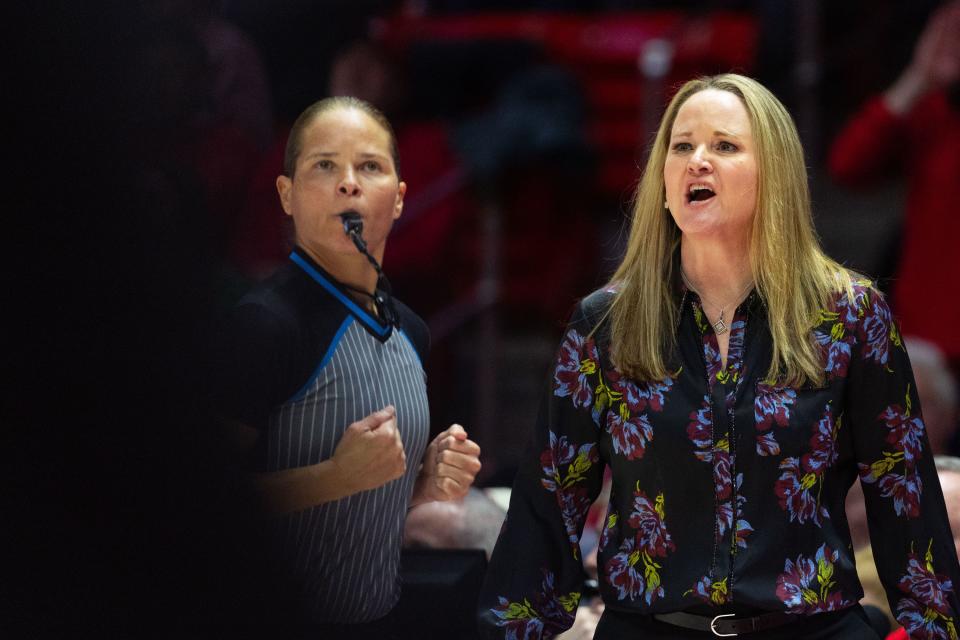3 questions for No. 20 Utah heading into second half of Pac-12 play
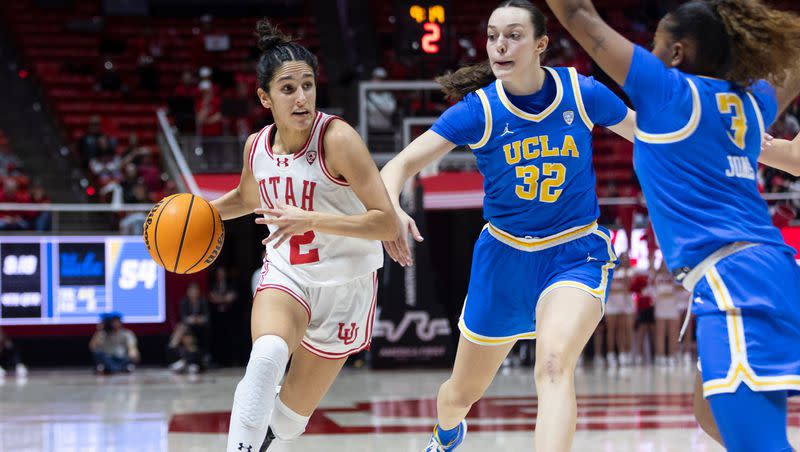
The next 31 days will determine what seed the No. 20 Utah women’s basketball team will receive in the Pac-12 tournament in Las Vegas in early March.
That will play a factor in whether the Utes receive a Day 1 bye in the tournament with a top-four seed or be forced to play every round in what ESPN’s Charlie Creme called “the most important conference tourney in the country.”
“The top teams aren’t just battling for a league championship. Every Friday and Sunday for the rest of the season, Pac-12 play will impact NCAA Tournament seeding,” Creme wrote of the Pac-12 two weeks ago.
Utah arrived at the midpoint of conference play with a 15-6 overall record, 5-4 in Pac-12 action. The Utes are fifth in the league standings, though that can change quickly.
While that’s not where the Utes were projected to be — Utah was the preseason favorite to win the Pac-12 — it’s not as simple as defining success and progress by looking at where the Utes currently sit in the standings.
There are other factors among them — for example, is the team showing growth?
After a stretch where Utah lost three of its first four Pac-12 games while going through a metamorphosis with injuries to Gianna Kneepkens and Issy Palmer, the Utes have responded well, outside of last Sunday’s blowout loss at Oregon State.
Before that, the Utes won four straight, including victories over No. 6 USC and No. 2 UCLA in a highly charged weekend series.
Palmer is back after missing 10 weeks due to an undisclosed injury, and while Kneepkens is out for the season with a broken foot, the team has transformed into a resilient bunch behind ninth-year coach Lynne Roberts and All-American forward Alissa Pili.
The Utes could have folded after losing at home to Stanford, their first loss at the Huntsman Center since falling to Oregon in the 2021-22 regular-season finale, but responded with their most impressive stretch of the season — beating California by 37, top-10 USC by 20 and then-No. 2 UCLA by 13 in overtime, followed by a 10-point victory at Oregon.
Now, Utah heads into the back half of Pac-12 play with the chance to improve its stock not only in the league but on a national scale as well.
What are some of the key questions surrounding the Utes as they embark on the final month of the regular season? Here’s a look at three pressing issues.
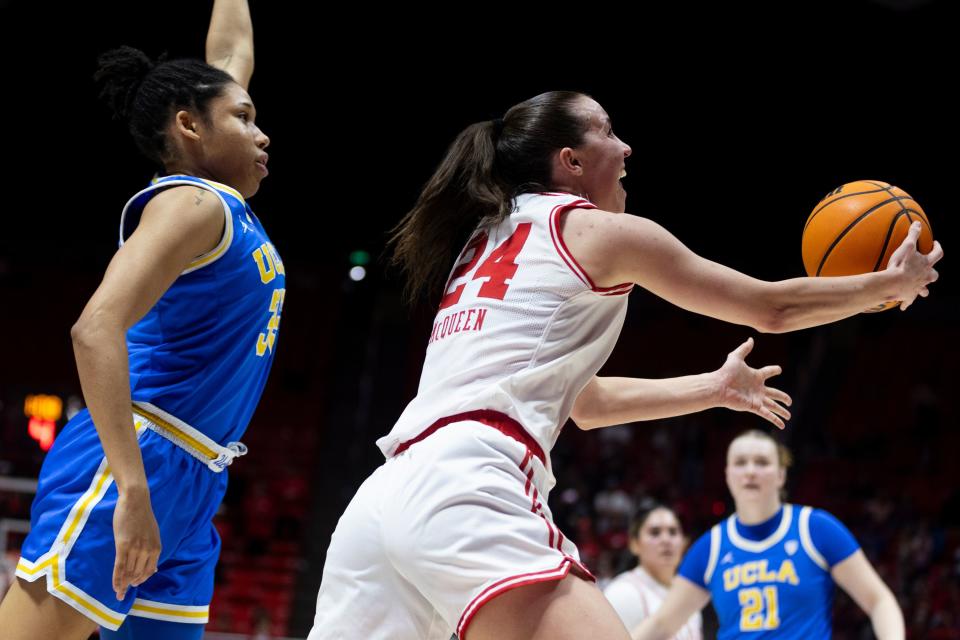
How will the team react to the grind of February play?
Utah still has nine games remaining in the regular season, five at home, beginning with a two-game road swing to Washington this Friday (8 p.m. MST, Pac-12 Washington) and at Washington State on Sunday (1 p.m., Pac-12 Washington).
The Utes are coming off a stretch where they played four games in nine days, thanks to playing the first pair of games on a Friday and Monday, followed by two more on a Friday and Sunday the next weekend.
That’s the nature of conference action. During the next five weeks, Utah will only have one week with a single game and four with a pair of contests as they wind down the regular season.
Of particular importance will be to see how the Utes respond on the road, where they are 5-4 on the year and 2-3 in conference play.
Those losses include blowing an eight-point fourth-quarter lead before falling at top-five Colorado, losing in overtime at Arizona, and the aforementioned loss to Oregon State, where the Beavers shot 69.4%.
Outside of that Oregon State loss, Utah was in every Pac-12 game thus far and arguably wasn’t that far from an 8-1 league record.
“I refuse to buy into the narrative of, ‘Oh, we’re just not as good ... on the road.’ Like, we’re not going to do that. And I think something you know, it’s like I’ve said before, it’s like missing free throws, the more you talk about it — we’re not buying into that narrative,” Roberts said.
“We’re gonna play well on the road this weekend. Like, that’s it. I know that sounds silly, but that’s the reality. I’m not buying into that. Our players, we need to figure it out. You need to prepare the same way and even have a little more edge. You know, to beat a good team at home you got to first keep their energy and I think that’s where we’re lacking and that’s 100% controllable.”
February will be a mentally and physically challenging month for Utah and every team in the conference.
“I think for the rest of the games, you know, we’re the underdog. I really believe that. In February, the toughest teams win — mentally, physically, the toughest teams win,” Roberts said.
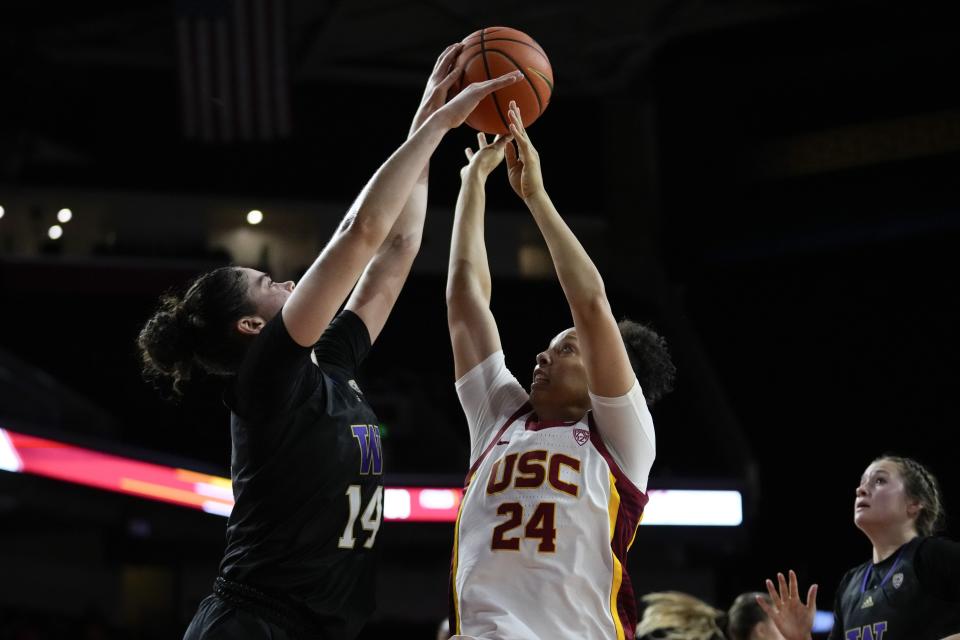
How will Pac-12 play prepare Utah for the NCAA Tournament?
One of the hallmarks of the Pac-12, traditionally one of the top conferences in women’s basketball, is the parity that’s been on display throughout league play.
Behind league leader Stanford, there’s a logjam of six schools all within 2.5 games of each other in the standings.
Last weekend, the Utes’ two upcoming opponents both went on the road and sprang upsets. Washington went in and beat then-No. 11 USC at the Galen Center, while Washington State knocked off then-No. 2 UCLA at historic Pauley Pavilion.
Related
No. 16 Utah shakes off early struggles before rallying past Oregon
Utes run into Beavers buzzsaw as No. 25 Oregon State rolls past No. 16 Utah
Regarding Washington, Roberts said, “They run their offense for 20-25 seconds, it’s really hard to speed them up. They’re really effective with it. And then defensively, they just kind of play percentage D. They play really hard.”
As for the Cougars? “Washington State is always really hard to beat. Pullman’s a tough place to win. I don’t know why, it’s a hard place to play,” Roberts said.
In ESPN’s latest bracketology, Creme predicts that eight Pac-12 teams will make the NCAA Tournament. Among those, Stanford, UCLA and Colorado are considered strong candidates for a No. 1 seed.
With two-thirds of the Pac-12 field projected to make the NCAAs, league play can be beneficial come NCAA Tournament time — the grind of the conference season can lead to more seasoned groups come postseason time.
“One through 12, everyone’s competitive,” Palmer said of competing in the Pac-12. “If you slip up, you’re susceptible to a loss. I think it helps us because in March, it’s survive and advance. As soon as you lose, you’re out. So that mentality is kind of emulated in the Pac 12 because if you don’t come to play on one game, one night, you lose. It can be anyone’s game.”
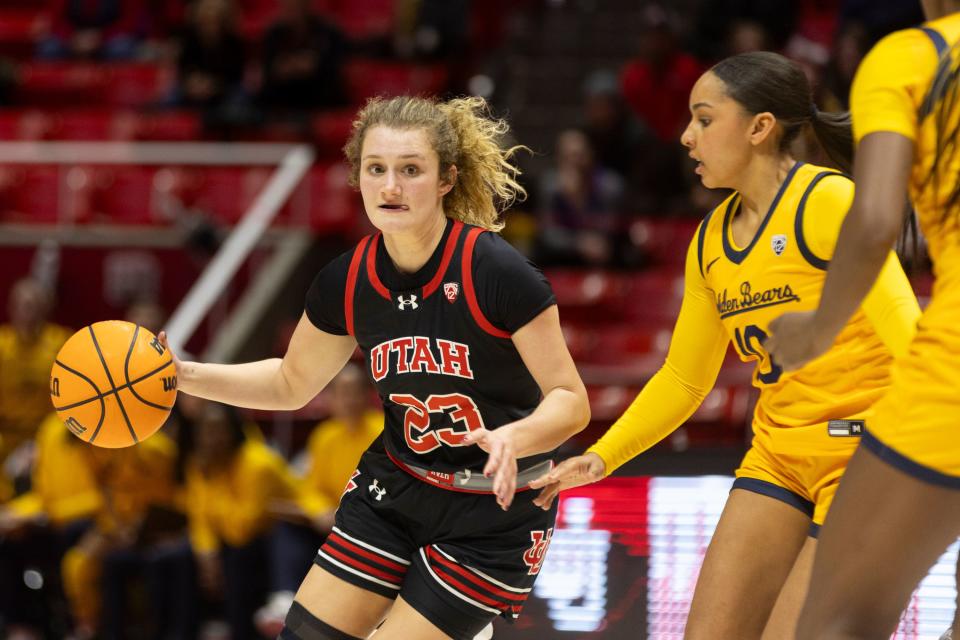
Who is the X-factor for this team?
While Pili — who averages 22.3 points and 5.7 rebounds per game — is the driving force behind the Utes’ efforts, there are several others making key contributions on an almost nightly basis.
Which one of those could be the X-factor as the season winds down?
Particularly since Kneepkens’ injury, juniors Kennady McQueen and Jenna Johnson have been the team’s primary scorers behind Pili, while also impacting the game in other ways — McQueen with her ability to distribute the ball and Johnson with her defensive toughness.
Junior Ines Vieira, who took over Palmer’s starting point guard spot and has thrived, is averaging 8 points, 6.3 assists and 2.9 steals per game, using her speed and athleticism to frustrate opposing teams.
Palmer is still getting back to full strength — a process where she’s “slowly starting to feel like myself again” — but was averaging 14 points per game before her injury; the senior guard has shown throughout her college career to be a reliable contributor in multiple ways.
There’s also sophomore guard Maty Wilke, the Wisconsin transfer who took some time to acclimate to her new team but has been on a hot streak in recent weeks.
During Utah’s last six games, she’s averaged 11.5 points while shooting 51% from the floor and has averaged nearly two steals per game.
In conference play, Wilke has hit a team-leading 20 3-pointers, all while being one of the first players coming off the bench.
“Maty obviously struggled like a little bit preseason, but she’s an awesome player,” Palmer said of her teammate. “We’ve seen that the last few weeks in conference play. She’s really been a lot for us — the X-factor — with her just hitting big-time shots. She can shoot the ball and make plays and she’s also good on defense, too.”
